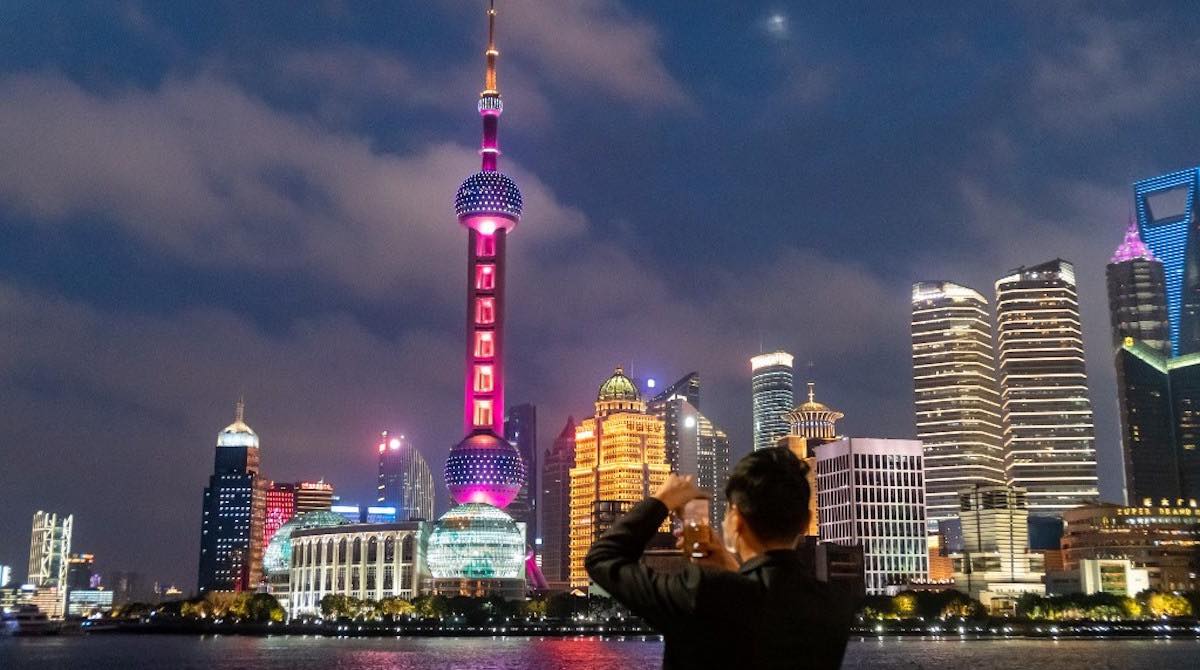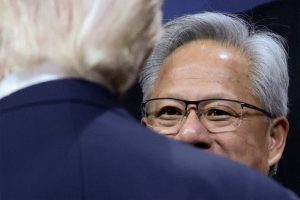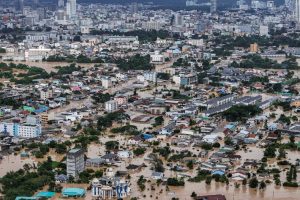Three Covid outbreaks in Guangdong
“Since May 21, Guangdong has fought three different Covid-19 battles: Guangzhou ‘5.21’ epidemic, Shenzhen ‘5.21’ epidemic, and Shenzhen and Dongguan ‘6.14’ epidemic.” This week, an expert from the Guangdong Working Group of the State Council’s Joint Prevention and Control Group said in an interview that epidemiological investigation and genome sequence comparisons of virus samples had revealed that the outbreaks were three independent events. So far, the social risks of the first two outbreaks had been brought under control, but the third was still at the stage of “hand-to-hand combat,” the expert said on Tuesday.
Meanwhile, the city of Foshan is under lockdown, although allegedly with no official cases, and this has led to some social unrest, one report said.
Shanghai to build another finance district
Recently, Shanghai’s financial sector has been excited, according to local media reports. As one of China’s leading yuan-denominated trading centres and fully open to foreign investors, crude oil options were officially listed for trading in the Shanghai International Energy Exchange, a subsidiary of the Shanghai Futures Exchange. On the same day, the first batch of nine Real Estate Investment Trusts (REITs) offered by infrastructure securities investment funds were listed on the Shanghai and Shenzhen Stock Exchanges, filling gaps in local capital markets.
At the Lujiazui Forum it was revealed that in the near future, the Shanghai Lingang New Area, the Guangdong-Hong Kong-Macao Greater Bay Area and parts of the Hainan Free Trade Port will enjoy major policy benefits announced for the high-level opening up of foreign-exchange management.
Currently, Shanghai’s financial centre is a matrix. The Bund, North Bund, Lujiazui and Lingang, which is 70 kilometres away from People’s Square, have all expressed support for the government’s plan to build a second “Lujiazui” on the shore of Dishui Lake.
BIPV stocks heat up
On Thursday June 24, BIPV concept stocks soared. BIPV, or Building Integration of PhotoVoltaics, such as solar panels, refers to the technology that integrates photovoltaic products into a building, making it a little like a “power station”.
As of press time, nearly 20 stocks such as Xiuqiang, Tus Design, Guangtian Group, Qingyuan and others had hit their daily limit on local stock exchanges, and individual stocks in the sector were almost all up. It was reported that the General Department of the National Energy Administration recently issued a notice on the submission of an entire county (city or district)’s rooftops would be part of a photovoltaic development pilot programme. According to the notice, the pilot counties (cities, districts) that apply for the project must have abundant roof resources and good absorbing capacity (into the local grid), plus an installable ratio of photovoltaic installations on the total roof area of the party and government organs should not be less than 50%. The industrial and commercial distribution area should not be less than 30%, all plans should be submitted to the New Energy Department of the Energy Bureau before July 15.
Huawei Sweden decision upheld
In October last year, the Swedish government’s telecommunications regulator announced that telecom companies participating in Sweden’s 5G spectrum auction activities were prohibited from using equipment from the Chinese company Huawei. Huawei appealed this decision. According to Reuters, a Swedish court made a ruling on Tuesday, local time, upholding the ban on Huawei’s sales of 5G equipment in the country. In response to the Swedish court’s decision, a spokesperson for Ericsson said that the decision now confirmed by the court “may adversely affect the economic interests of Sweden and Swedish industry, including the interests of Ericsson.” About 10% of Ericsson’s revenue comes from China. Ericsson has previously expressed concern about Sweden’s ban on Huawei’s 5G equipment and said that Ericsson may lose its market share in China as a result.
Evergrande everpaying back debt
The pace of Chinese real estate giant Evergrande’s debt reduction continues to accelerate, and the ‘three red lines’ are slowly turning green. In the second half of last year, the Chinese government made a ruling that all real estate developers must not cross ‘three red lines’ on debt ratios and borrowing.
On June 24, Evergrande announced that the company had arranged for funds of approximately HK$13.6 billion to be remitted to a bond repayment account to repay US$1.45 billion of debt due on June 28 (next Monday), as well as all overseas US dollar debt it owes. The interest payable is nearly US$300 million, totaling approximately $1.75 billion. That means Evergrande will have no further overseas open market bonds maturing before March 2022.
Analysts said that Evergrande’s repayment of foreign debt not only shows the company’s financial strength and good credit, but also its determination to greatly reduce its massive debt, which once exceeded $130 billion.
New green bond definition comes out
Zhang Bei, deputy director of the Institute of Finance at the People’s Bank of China, gave a speech at the 2021 Caixin Summer Summit being held in Beijing this week, which revealed China’s green bond standards, plus progress on environmental issues and information disclosure.
In regard to criteria for defining green bonds, Zhang Bei said that with approval from the National Financial Standardization Technical Committee, China established a working group to take the lead in setting up national green finance standards. So, three years later, the research, formulation and release of a number of standards has been completed. For example, in 2015, the green bond support project catalogue (2015 edition) was released with green bond credit rating standards. And in April this year, the central bank took the lead in printing and distributing a “Catalogue of Green Bond Supported Projects (2021 version)”.
Zhang Bei said there had been some new developments in the latest edition. The first is that the criteria for defining green projects is more scientific and accurate. In order to better address climate change and meet carbon-emission reduction targets, the new version of the catalogue no longer includes fossil fuel energy such as coal.
Rare earths start rebound
The rare earth permanent magnets sector strengthened again in trading on June 24. As of press time, Minmetals Rare Earths rose 9%, while Shenghe Resources, Northern Rare Earths, Guangsheng Nonferrous Metals, Innova, and Zhenghai Magnetic Materials followed with lesser gains.
Rare earths – 17 mineral elements sometimes known as “industrial vitamins” – are extremely rich in physical and chemical properties, and have become strategic elements in important fields such as new energy and defence. In recent years, as the world adopts electric vehicles to replace fuel vehicles and vigorously develops renewable wind power, the demand for neodymium iron boron magnets has continued to soar.
Relevant agencies predict that by 2030, the demand for permanent magnets for electric vehicle motors will grow at an annual rate of 31%. At present, the demand for neodymium and praseodymium in the electric vehicle industry accounts for 5% of the total demand for rare earths. By 2035, the supply of neodymium and praseodymium in the world may not be able to meet the demand for electric vehicles.
In addition, the demand for rare earth magnets for wind power generation is also growing rapidly. Analysts expect a compound annual growth rate of 25%. The European Union plans to increase the installed capacity of offshore wind turbines by five times the current level by 2030 to 60,000 megawatts. And each megawatt of installed capacity requires 1 ton of neodymium iron boron.
CITIC Securities said that downstream demand supports prices, and the rare earth sector may start a rebound.
























